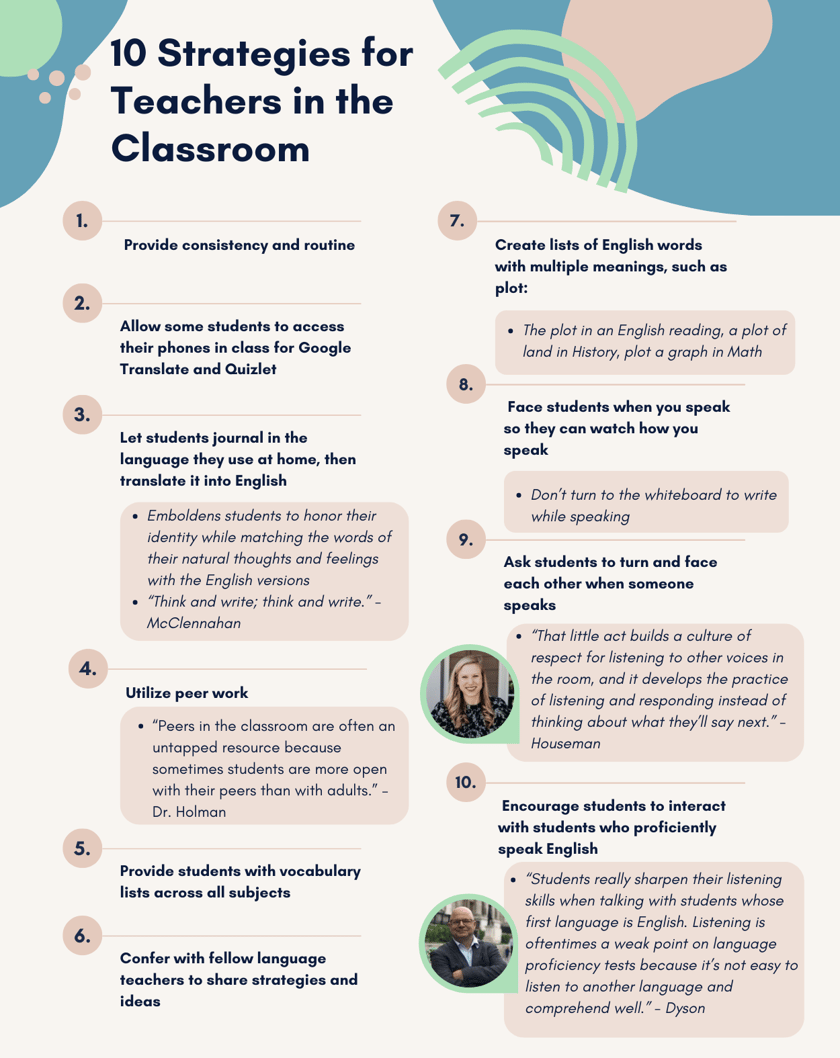
Practical ways you can support English Learners and diverse learners in your classroom.
For ESL students, acquiring proficiency in the academic English language opens the door for them to thrive across all subjects. However, learning a new language is a long, difficult process that requires courage and resilience from students who initially might feel vulnerable and out of place.
Riverside Insights’ own Anna Houseman, Dr. Sarah Holman, Rhoni McClennahan, and Rob Dyson applied their decades of experience in ESL settings to provide us with their best practices to encourage each ESL student and effectively set them on a path toward overall academic success.
As a first step, Dr. Holman suggests developing a more comprehensive linguistic profile of students: “Standardized tests are an important part of that, but we need to look at a student’s linguistic background and exposure, what languages they speak at home, with whom do they speak those languages in order to build a more comprehensive picture and be able to determine where their strengths and weaknesses lie in their language abilities.” Such comprehensive profiles could also serve as references for future students in similar scenarios to help differentiate between a student’s lack of confidence in language and a learning issue to address.
In the classroom, our roundtable agreed the most fundamental aspect of a successful ESL teacher is establishing a culture of trust.
Dr. Holman says, “It’s crucial to establish your classroom as a place where it’s safe to try, experiment, and get feedback and comprehensive input that allows students to make sense of what’s going on around them.”
From there, our roundtable suggests these strategies for teachers in the classroom:

Lastly, our roundtable has three tips for interacting with ESL parents:
- “If parents don’t speak English, still look at them when you’re talking with them – even if an interpreter is there – because it lets them be and feel actively involved in that component of their child’s education.” – Dr. Holman
- “Get students to teach you how to say hello in the language they speak with their parents so that when you meet the parents, you can at least greet them in their language.” - Dyson
-
.png?width=120&name=FEBE%20Speaker%20Bubble%20-%20Rhonni%20(1).png) “We held Thanksgiving with all of our ESL families, and each family brought a dish from their culture, and we’d all have a meal together. It was a tug on the heart for both parents and teachers because it really solidified our friendship.” -McClennahan
“We held Thanksgiving with all of our ESL families, and each family brought a dish from their culture, and we’d all have a meal together. It was a tug on the heart for both parents and teachers because it really solidified our friendship.” -McClennahan
Stay tuned for future blogs as we recap our summer webinar series, For Educators, By Educators (FEBE), and highlight the best practices and tactical tips our educators have found successful. To continue the conversation, follow our LinkedIn group, "From Insights to Action: A Riverside Insights Network," to connect with the Riverside Insights educators featured in this blog.





